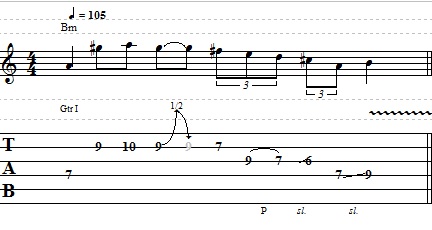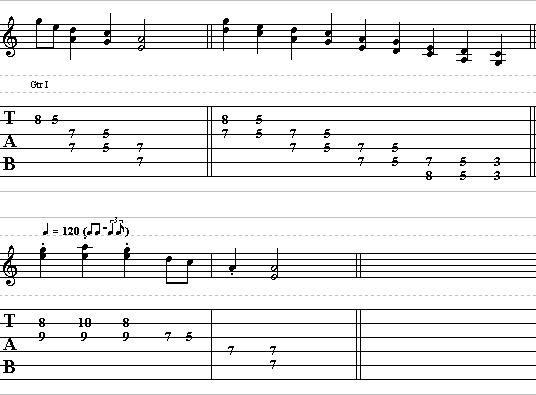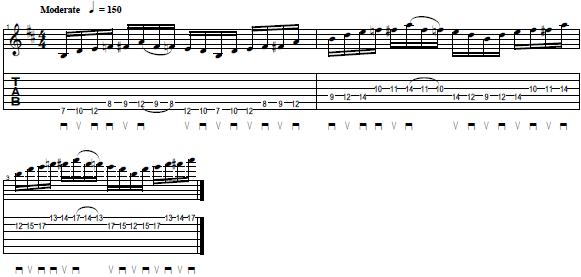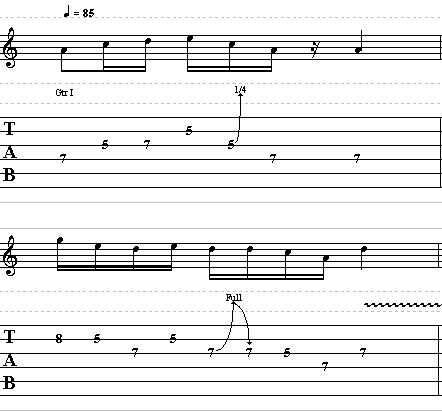Here´s a cool lesson from GuitarControl.com on a Guitar Practice Routine Part 1 to develop a great technique, hope you like it!
Introduction
Hi. This is Rob Compagna for guitarcontrol.com and today we’re going to talk about Guitar Practice Routine, warm-up routines, daily warm-up routines. This is the first of a three-part series. We’re going to discuss and what I’m going to show you is my daily warm-up routine. It takes about 30 minutes and it’s important because all serious guitarists, all the great guitarists have a daily warm-up routine that they do. It’s something you have to do and stick with it every day, every day, and then you’ll build-up over time. You’ll build up strength, accuracy and speed.
Practice Routine Tone
The first thing I want to tell you about is it’s always important to do a clean tone when you do these Guitar Practice Routine so you can hear any mistakes or anything like that. The second rule is always to make sure that you play things cleanly, no flubbed notes or anything like that. Try not to push yourself so that you’re making mistakes, otherwise when you go to perform you’ll sound like that when you do that. So take it down a level. Remember, this is something that you’re going to be doing over the course of your life. It’s your own private time so make sure that you’re nice and clean. And, always work with a metronome. Always work with a metronome. It makes you smooth and even and it’s always a way to monitor your progress.
Practice Routine Exercises
The first exercise that we’re going to do for this Guitar Practice Routine — and I’m not going to be using a metronome right here, but you’ll see. It’s all in the tab that’s going to attached in the description for this video. Ring pinkie exercise, ands it’s very important
because it builds-up the independence between these two fingers because they’re linked together and you don’t want them to be linked when you play. Anyway, it goes four directions, and of course this is with your metronome. The first direction is… And then when you go down… Now, the other thing, too, important about these exercises is to make sure you have alternate picking. The third direction is up and reverse. And then down and reverse. Then you move up to the next fret and next fret, all the way up to the 12th, and then back down to the 1st fret. It takes a while. This one really kills, but it’s a great one and again, make sure you are clean and smooth. So I’ll do the first couple of frets here. Wow! Isn’t that fun? That was awesome. Much more fun all the way up to the 12th fret, and then once again all the way back down. So that’s that exercise.
Diatonic Scale
The next thing I work on for this Guitar Practice Routine is my diatonic scales. I practice them in all seven positions, which I’m going to give the tabs here. The first one — and I always do this in F because it lines-up nicely on the neck. So the first position is the ionian
position. The next position is the dorian position. Now, if these sound like modes to you; they are. So the next one is phrygian. The next one is lydian. Next one is mixolydian. Next one is aeolian. The next one and the last one is locrian.
Knowing these seven positions, I string these together in a back-to-back, ascending routine that I do with a metronome. So there you go. You might even notice I made one little mistake there, but that happens. You’ll have these when you practice. So that’s just a part of it. You’ve got to get used to it and you just keep on plugging away. So that’s the diatonic.
The other thing, too, that I’ll show you is I also do it in groups of four, up and down, so you understand that one.
The next one I do is I do it in groups of three. So basically what I’m establishing here is I can be able to do it in double time, which is like great for 16th notes, or triplets. The next one, the exercise, is going to be in groups of three, which is great for runs and runs that include triplets, sextuplets, et cetera. So the triplet one goes… So you get the point. That goes all the way up to the locrian and then back down. Once again, see the tabs on this.
Conclusion
That’s the end for this, the first of a three-part series of practice exercises, daily practice routines. I hope you enjoy this and please, for your own safety, make yourself a better guitar player, have this be a daily routine and have it happen for the rest of your life. All right, take care, everybody, and once again, you can review these tabs on the link that is in
the description to this video. I hope you’re enjoying guitarcontrol.com and take care. Good bye.




















